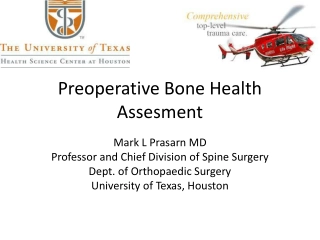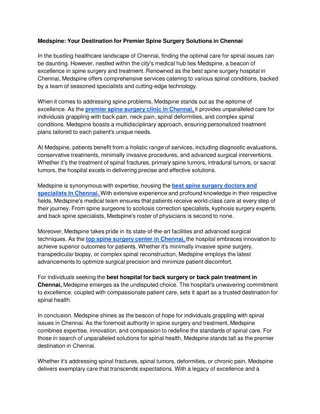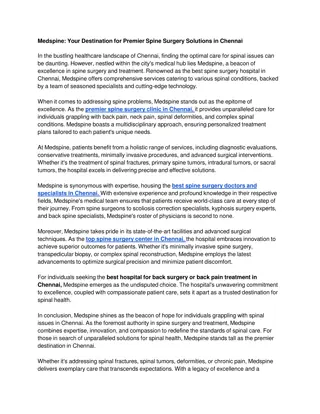
Key Considerations for Abdominal Surgery: Anesthesia, Surgical Requirements, and Postoperative Care
Discover the essential aspects of abdominal surgery, including anesthesia requirements, preoperative preparations, surgical techniques, and postoperative care. Learn about the importance of patient assessment, pain management, equipment utilization, and recovery monitoring for successful surgical outcomes.
Download Presentation

Please find below an Image/Link to download the presentation.
The content on the website is provided AS IS for your information and personal use only. It may not be sold, licensed, or shared on other websites without obtaining consent from the author. If you encounter any issues during the download, it is possible that the publisher has removed the file from their server.
You are allowed to download the files provided on this website for personal or commercial use, subject to the condition that they are used lawfully. All files are the property of their respective owners.
The content on the website is provided AS IS for your information and personal use only. It may not be sold, licensed, or shared on other websites without obtaining consent from the author.
E N D
Presentation Transcript
ABDOMINAL SURGERY SUJATA WALODE, TUTOR, MGM SBSA
ANESTHESIA REQUIREMENT During abdominal surgery, including laparoscopic and genitourinary procedures, anesthesia and surgical requirements are critical to ensure patient safety, comfort, and successful surgical outcomes. Here's an overview of the key considerations: Anesthesia: Preoperative Assessment: The anesthesiologist evaluates the patient's medical history, current health status, and any preexisting conditions to determine the appropriate anesthesia plan. Anesthesia Choice: The choice of anesthesia can include general anesthesia (patient is unconscious), regional anesthesia (numbing a specific region of the body), or a combination of both. Monitoring: During surgery, the patient's vital signs such as heart rate, blood pressure, oxygen saturation, and end-tidal carbon dioxide levels are continuously monitored. Airway Management: Proper airway management is crucial. Anesthesia providers secure the patient's airway to ensure proper ventilation and oxygenation. Pain Management: Anesthesia providers administer analgesics to manage pain during and after surgery. This could involve local anesthetics, opioids, or other pain-relieving medications
SURGICAL REQUIREMENT Preoperative Preparation: Surgeons ensure that the patient is properly prepared for surgery, which may include fasting, bowel preparation, and administration of prophylactic antibiotics. Surgical Technique: The surgical approach can be open, laparoscopic, or robotic-assisted, depending on the procedure and patient factors. Equipment and Instruments: Laparoscopic and robotic procedures require specialized equipment, including trocars (for entry points), laparoscopic instruments, and a video camera system for visualization. Positioning: Proper patient positioning is essential for optimal exposure and access during surgery. Care is taken to prevent pressure injuries and nerve damage. Hemostasis: Surgeons ensure effective control of bleeding during the procedure through techniques like cauterization, sutures, or hemostatic agents. Tissue Handling: Delicate tissue handling minimizes trauma and reduces the risk of complications such as adhesions or tissue necrosis. Genitourinary Considerations: In genitourinary surgery, specific considerations include preserving urinary function, minimizing damage to surrounding structures, and addressing any urological issues.
POST OPERATIVE CARE Recovery and Monitoring: After surgery, patients are closely monitored in a recovery area until they regain consciousness and stable vital signs. Pain Management: Adequate pain relief is provided postoperatively to ensure patient comfort. Fluid and Nutrition: Proper fluid and nutritional support are administered to aid recovery and prevent complications. Mobility: Encouraging early mobilization helps prevent complications like deep vein thrombosis and aids in faster recovery. Follow-up: Patients are scheduled for follow-up visits to assess wound healing, address any concerns, and monitor overall recovery.
LAPROSCOPIC SURGERY Patient Evaluation: The patient's medical history, current health status, and any preexisting conditions are assessed to ensure they are suitable for laparoscopic surgery. Preoperative Fasting: Patients are instructed to fast for a specific duration before surgery to reduce the risk of aspiration during anesthesia induction. Bowel Preparation: In some cases, bowel preparation might be required to clean the intestines and reduce the risk of contamination during surgery. Informed Consent: Patients receive thorough explanations about the procedure, its risks, benefits, and alternatives. Informed consent is obtained before surgery. Marking and Site Selection: The surgical team marks the intended incision sites and trocar insertion points. These marks guide the placement of laparoscopic instruments. Preoperative Antibiotics: Prophylactic antibiotics may be administered before surgery to prevent surgical site infections. Preoperative Checklist: A comprehensive checklist is followed to ensure all necessary equipment, instruments, and supplies are available for the procedure. Anesthesia Consultation: Collaboration with the anesthesia team to discuss patient specifics and anesthesia plan.
ANESTHESIA PREPARATION Patient Assessment: An anesthesiologist evaluates the patient's medical history, physical condition, and any potential risks related to anesthesia. Anesthesia Plan: Based on the patient's health and the surgical procedure, the anesthesiologist decides on the type of anesthesia to be used (general, regional, or a combination). Preoperative Fasting: Anesthesia providers ensure the patient has followed the fasting guidelines to minimize the risk of aspiration. Intravenous Access: An intravenous (IV) line is established for administering medications, fluids, and anesthesia agents. Monitoring: During surgery, the patient's vital signs (heart rate, blood pressure, oxygen saturation, etc.) are continuously monitored to ensure their safety. Airway Management: The anesthesiologist manages the patient's airway, which may involve intubation (inserting a breathing tube) or using a supraglottic airway device. Induction of Anesthesia: Anesthesia is induced, and the patient is carefully monitored throughout the procedure. Pain Management: Analgesics are administered to manage pain during and after the surgery. Muscle Relaxation: Depending on the surgical requirements, muscle relaxants may be used to ensure proper surgical access and minimize movement. Emergence and Recovery: At the end of the surgery, anesthesia is gradually reduced, and the patient is carefully brought out of anesthesia. They are then monitored in the recovery area until fully conscious and stable.
GENITOURINARY SURGERY Patient Evaluation: Thorough assessment of the patient's medical history, physical condition, and any urological or genital concerns that might affect the surgery. Preoperative Counseling: Patients receive detailed information about the procedure, its potential risks, benefits, and postoperative care. Informed consent is obtained. Preoperative Fasting: Patients follow fasting guidelines to minimize the risk of aspiration during anesthesia induction. Bowel Preparation: For certain procedures, bowel preparation might be necessary to ensure a clean surgical field. Preoperative Antibiotics: Prophylactic antibiotics are administered to prevent surgical site infections. Imaging and Diagnostic Tests: Radiological or imaging studies may be conducted to provide detailed information about the surgical area. Marking and Site Selection: The surgical team marks the surgical site and identifies key anatomical landmarks for precise incisions and instrument placement. Equipment and Instrumentation: Specialized instruments and equipment needed for genitourinary surgery are prepared, ensuring they are sterile and functional. Positioning: Patients are positioned correctly to provide optimal access to the surgical site while maintaining their comfort and preventing pressure injuries. Hemostasis Planning: Strategies for controlling bleeding are considered, including cauterization techniques, suture materials, and hemostatic agents.
ANESTHESIA PREPARATION Patient Assessment: The anesthesiologist assesses the patient's overall health, comorbidities, and potential anesthesia-related risks. Anesthesia Plan: Anesthesia type (general, regional, or combination) is chosen based on patient characteristics and surgical requirements. Preoperative Fasting: Ensuring the patient follows fasting guidelines to minimize aspiration risk. IV Access: An intravenous line is established for fluid administration, medication delivery, and anesthesia induction. Monitoring: Vital signs, including heart rate, blood pressure, oxygen saturation, and end-tidal carbon dioxide levels, are continuously monitored. Airway Management: The anesthesiologist manages the patient's airway, choosing appropriate airway devices or intubation techniques. Anesthesia Induction: Anesthesia is induced while closely monitoring the patient's responses. Pain Management: Adequate analgesia is provided to manage intraoperative and postoperative pain. Fluid Management: Ensuring proper hydration and fluid balance during the procedure. Emergence and Recovery: The patient is gradually brought out of anesthesia, monitored, and transferred to the recovery area.






















